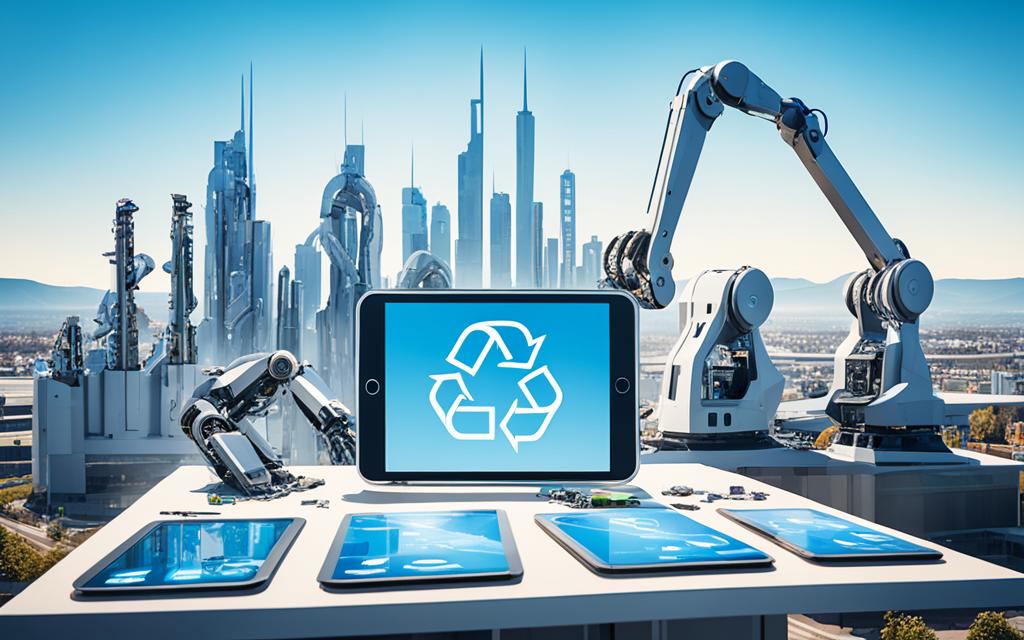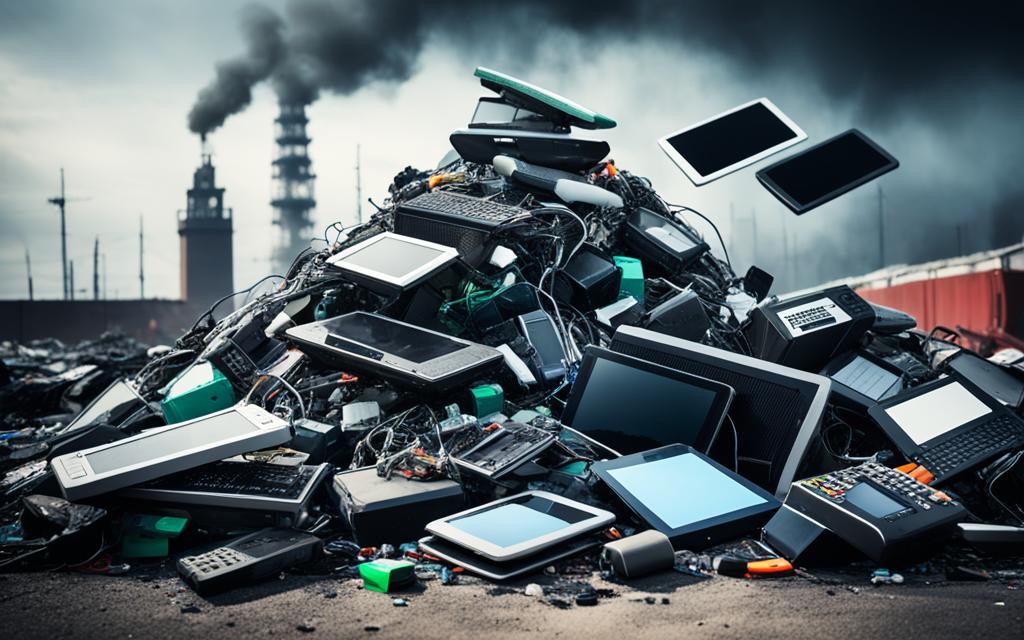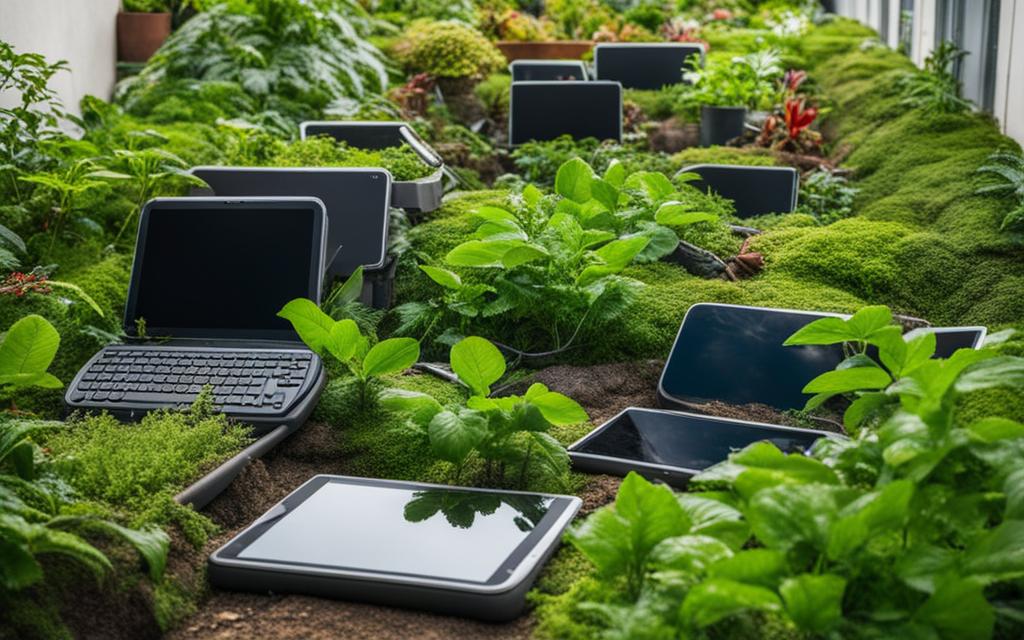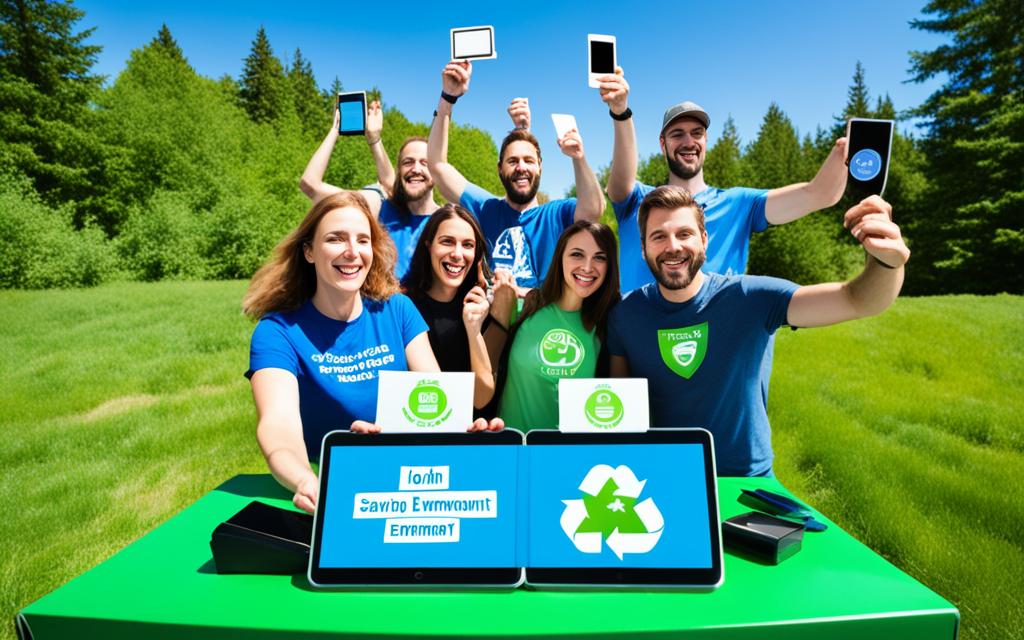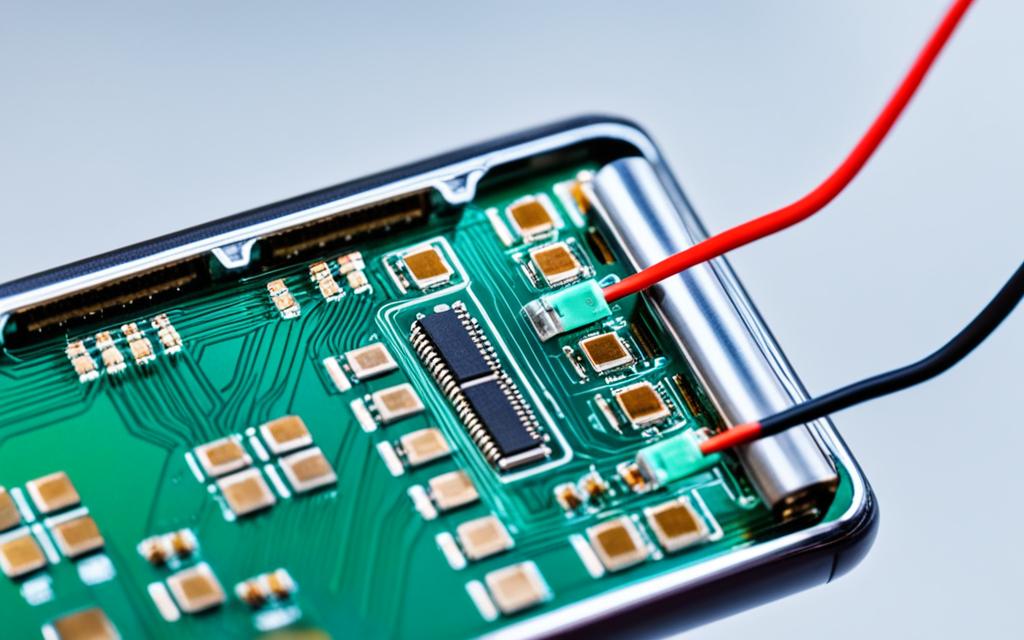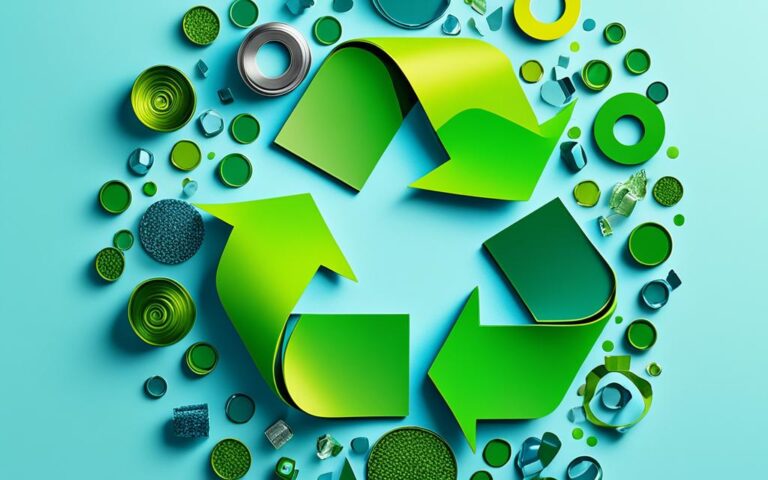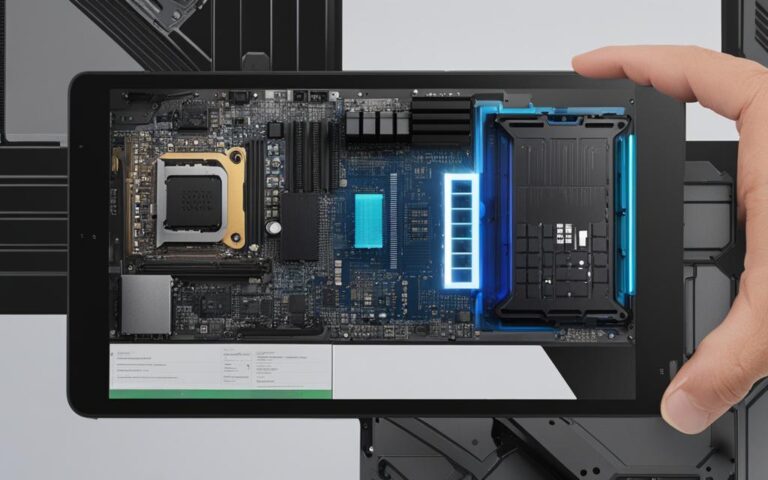Innovations in Tablet Recycling: New Technologies and Methods
Tablet recycling has become a pressing issue as the global climate crisis worsens. Companies are under increasing pressure to improve their environmental management and reduce their carbon footprint. Measuring and communicating environmental impact is important for identifying areas of excessive impact and making informed decisions. There are various tools and best practices available to measure and communicate environmental impact, including life cycle assessments and environmental impact reports. Once the environmental impact is measured, companies can take steps to mitigate it through conventional methods like energy efficiency and recycling, as well as transformational measures like using eco-friendly materials and working with sustainability-focused organizations.
The Importance of Measuring Environmental Impact
Measuring environmental impact plays a pivotal role in today’s corporate landscape, allowing companies to identify areas of excessive impact and take targeted actions to reduce their carbon footprint. Beyond regulatory compliance, it is vital for businesses to meet the growing expectations of sustainability-conscious customers and stakeholders. By quantifying and communicating environmental impact metrics, companies can demonstrate their commitment to sustainability and work towards their goals in a transparent manner.
One of the key metrics to measure is the carbon footprint. Calculating the carbon emissions associated with operations, supply chains, and product lifecycles enables companies to identify high-impact areas and implement effective strategies for emission reduction. Additionally, measuring water consumption, energy inefficiencies, and waste management practices provides valuable insights for developing sustainable practices across all aspects of business operations.
By embracing measurement and transparency, companies can:
- Show Compliance: Measuring and reporting environmental impact metrics helps companies demonstrate compliance with regulatory requirements and industry standards. This not only fosters trust among customers and stakeholders but also ensures transparency and accountability.
- Drive Sustainability Efforts: Measuring environmental impact serves as a compass for companies navigating their sustainability journey. It provides a baseline to track progress, set ambitious targets, and continually improve sustainability performance.
- Inform Decision-Making: Accurate measurement of environmental impact enables data-driven decision-making. By understanding the areas of significant impact, companies can prioritize efforts and allocate resources effectively to reduce their environmental footprint.
- Engage Stakeholders: Measuring and communicating environmental impact metrics enables organizations to foster meaningful engagement with customers, investors, and employees. Sustainability-conscious stakeholders are increasingly seeking comprehensive and transparent information on a company’s environmental practices.
The importance of measuring environmental impact cannot be overstated. It not only helps companies fulfill their corporate social responsibility but also contributes to the global efforts towards sustainability. By embracing robust measurement practices and incorporating sustainability into their core business strategies, companies can pave the way for a greener and more sustainable future.
Technologies Revolutionizing Tablet Recycling
Smart waste management technologies are revolutionizing tablet recycling, enabling a more efficient and sustainable process. These cutting-edge technologies leverage the power of the internet of things (IoT) to monitor waste levels, schedule collections, and optimize waste management routes. The integration of these innovative solutions is paving the way for a greener future.
Smart Waste Bins
One of the key technologies transforming tablet recycling is the implementation of smart waste bins. These intelligent bins monitor trash levels in real-time, allowing for timely collection and reducing the risk of overflowing bins. Equipped with sensors, these bins can alert waste management teams when they are nearing capacity, ensuring efficient waste collection and preventing unnecessary waste overflow.
AI-Powered Robotics
The use of AI-powered robots has revolutionized waste sorting in tablet recycling. These advanced robots possess the ability to accurately differentiate between various materials, improving the efficiency of recycling centers. By automating waste sorting processes, AI-powered robots ensure optimal waste segregation, diverting recyclable materials away from landfills and maximizing the reuse of valuable resources.
“With the integration of AI-powered robots, tablet recycling processes have become more streamlined and environmentally friendly, reducing the impact of e-waste on our planet.” – Recycling Expert
Pneumatic Waste Pipes
In urban areas, pneumatic waste pipes are transforming waste disposal for tablets and other electronic devices. These pneumatic systems utilize an underground network of pipes to transport waste directly to central collection points. By eliminating the need for traditional waste collection methods, pneumatic waste pipes simplify waste management in densely populated areas, reducing traffic congestion and optimizing waste collection efficiency.
Solar-Powered Trash Compactors
Solar-powered trash compactors are helping increase waste collection capacity in tablet recycling. These compactors utilize solar energy to compress waste, allowing for more efficient use of collection trucks and reducing the frequency of collection trips. By minimizing the volume of waste, solar-powered trash compactors optimize waste management resources and promote sustainable waste disposal practices.
E-Waste Kiosks
E-waste kiosks are dedicated drop-off points where individuals can safely dispose of their electronic devices, including tablets. These convenient kiosks ensure proper e-waste recycling, preventing hazardous materials from entering landfills and minimizing environmental risks. By encouraging responsible disposal of electronic devices, e-waste kiosks support sustainable waste management practices and contribute to a circular economy.
Recycling Apps
To simplify the recycling process for individuals and businesses, recycling apps have emerged as valuable tools. These apps provide guidance on where and how to recycle tablets, ensuring they are handled responsibly and maximize their potential for reuse. Through user-friendly interfaces, recycling apps empower individuals to make sustainable choices and actively participate in the recycling revolution.
These technologies represent just a glimpse into the vast possibilities for tablet recycling. As innovation continues to drive the waste management industry, embracing these recycling innovations will pave the way for a more sustainable future.
The Role of Robotics in e-Waste Recycling
Artificial Intelligence (AI) and robotics are revolutionizing the field of e-waste recycling, offering efficient waste sorting and minimizing recycling errors. Through the integration of advanced technologies, robotics play a crucial role in addressing the challenges associated with e-waste management.
One of the key contributions of AI robots in e-waste recycling is their ability to accurately differentiate between different materials. This enables more efficient waste sorting in recycling centers and helps divert recyclable materials away from landfills. By ensuring precise material identification, robotics enhance the effectiveness of recycling processes.
In addition to waste sorting, robotics also contribute to optimizing waste collection routes. AI technology enables real-time monitoring of e-waste levels, allowing for better planning and coordination of waste collection activities. By streamlining the collection process, robotics minimize unnecessary transport and reduce greenhouse gas emissions associated with inefficient waste management practices.
Furthermore, robotics in e-waste recycling have the potential to increase the overall amount of waste processed. With their speed, accuracy, and ability to handle a wide range of materials, AI robots enhance the capacity of recycling centers to handle larger volumes of e-waste. This translates to a higher rate of recycling and a reduced environmental impact.
In summary, robotics equipped with AI are playing a significant role in e-waste recycling. Their capabilities in efficient waste sorting, optimization of waste collection routes, and increased processing capacity contribute to sustainable waste management practices. By leveraging the power of robotics, we can move closer to achieving a circular economy and minimizing the negative impacts of e-waste on our environment and society.
Innovative Solutions for Managing e-Waste
As the world grapples with the growing problem of e-waste, innovative solutions are emerging to address the challenges of managing electronic waste in a sustainable manner. These solutions are revolutionizing e-waste management by utilizing advanced technologies and introducing new approaches that promote recycling, energy conversion, and consumer participation.
E-Waste Recycling Plants: Transforming Waste into Resources
E-waste recycling plants play a crucial role in managing electronic waste efficiently. These facilities employ state-of-the-art technologies and processes to ensure the proper disposal and recycling of discarded devices. Through innovative methods, such as automated dismantling and specialized sorting systems, e-waste recycling plants maximize the recovery of valuable materials, like precious metals and rare earth elements.
Buy-Back Programs: Incentivizing Responsible Disposal
Buy-back programs provide consumers with a compelling reason to recycle their electronic products. By offering cash rewards or store credits for returning old or unwanted devices, these programs incentivize responsible disposal and discourage the accumulation of e-waste in households. As a result, more electronic devices are being diverted from landfills and directed towards proper recycling channels.
E-Waste to Energy: Harnessing the Potential of Renewable Resources
Converting e-waste into energy is another innovative solution that reduces the reliance on fossil fuels. Technologies like microbial fuel cells harness the energy generated from the biological breakdown of organic matter present in electronic waste. This process not only reduces the environmental impact of discarded devices but also produces renewable energy that can be integrated into the power grid, contributing to a more sustainable energy mix.
Creating a Sustainable Waste Management System
These innovative solutions come together to create a comprehensive and sustainable waste management system for e-waste. By combining technological advancements with consumer engagement, e-waste management becomes more efficient, environmentally-friendly, and economically viable. The integration of recycling plants, buy-back programs, and e-waste to energy initiatives paves the way for a circular economy where electronic devices are responsibly managed throughout their entire lifecycle.
Promoting a Circular Economy for e-Waste
Promoting a circular economy is crucial for effective e-waste management. By embracing recycling and reusing practices, we can maximize the lifespan of electronic products and minimize waste accumulation. This not only reduces the environmental impact of e-waste but also preserves valuable resources.
Advancements in recycling technologies and processes are key drivers in achieving a circular economy for e-waste management. These innovations enable the efficient extraction and recovery of valuable metals and components from discarded electronic devices. By recovering these resources, we can reduce the need for new mining and manufacturing, which further minimizes the environmental footprint.
Innovative Recycling Technologies:
- Advanced separation techniques for efficient material recovery
- Automated recycling systems for streamlined processing
- State-of-the-art refining methods for maximizing resource extraction
Implementing sustainable waste management practices is essential to ensure the success of a circular economy. Companies and individuals can contribute to this goal by responsibly recycling their electronic waste and supporting initiatives that promote proper e-waste disposal. Recycling programs and collection centers play a crucial role in facilitating the recycling process and ensuring that valuable materials are recovered.
“The circular economy is a symbiotic system where waste is seen as a valuable resource, and valuable resources are not discarded as waste.”
In addition to recycling, reusing electronic products is another essential aspect of the circular economy. Extending the lifespan of devices through repair, refurbishment, and resale reduces the demand for new products and minimizes e-waste generation. By encouraging consumers to embrace refurbished devices and supporting buy-back programs, we can significantly contribute to the circular economy.
Benefits of Promoting a Circular Economy:
| Environmental Benefits | Economic Benefits | Social Benefits |
|---|---|---|
| Reduces landfill waste and associated pollution | Creates job opportunities in recycling and refurbishment industries | Improves access to affordably priced electronic products |
| Conserves natural resources and reduces the need for raw material extraction | Reduces production costs through resource recovery | Supports sustainable development and social responsibility |
| Minimizes carbon emissions associated with manufacturing | Stimulates local economies through the establishment of recycling and repair facilities | Empowers communities through technology access and education |
By embracing a circular economy for e-waste, we can transform our approach to waste management and transition to a more sustainable future. It requires collaboration between governments, businesses, and individuals to create a comprehensive and well-regulated system for e-waste collection, recycling, and reuse.
Conclusion
Innovations in tablet recycling are revolutionizing the waste management industry and driving sustainable waste management practices. Through the implementation of technologies like smart waste management systems, robotics, and recycling apps, companies and individuals have the tools they need to measure and reduce their environmental impact.
These innovative advancements empower organizations to adopt sustainability-focused initiatives, leading to more efficient waste management processes. E-waste recycling plants and buy-back programs play a significant role in promoting a circular economy by incentivizing consumers to recycle their electronic devices and keeping valuable resources in circulation.
By embracing these tablet recycling innovations and adopting sustainable waste management practices, we can make significant strides towards a greener and healthier planet for future generations. The combination of technological advancements and a collective commitment to reducing environmental impact will contribute to a more sustainable and climate-resilient future.
FAQ
Why is measuring environmental impact important for companies?
Measuring environmental impact is crucial for companies to identify areas of excessive impact and make informed decisions about reducing their carbon footprint. It is also important for meeting the demands of sustainability-conscious customers and stakeholders. By measuring and communicating environmental impact metrics, companies can demonstrate compliance with regulatory requirements and work towards their sustainability goals. This includes measuring carbon footprint, water consumption, energy inefficiencies, waste management practices, and more.
How are smart waste management technologies revolutionizing tablet recycling?
Smart waste management technologies utilize the internet of things (IoT) to monitor waste levels, schedule collections, and optimize waste management routes. Innovations include smart waste bins that monitor trash levels in real-time, AI-powered robots for efficient waste sorting, pneumatic waste pipes for streamlined waste disposal in urban areas, solar-powered trash compactors to increase waste collection capacity, e-waste kiosks for safe disposal of electronic devices, and recycling apps to help individuals and businesses navigate recycling processes.
What is the role of robotics in e-waste recycling?
Artificial Intelligence (AI) and robotics are transforming e-waste recycling by enabling efficient waste sorting and minimizing recycling errors. AI robots can accurately differentiate between different materials, allowing for more efficient waste sorting in recycling centers. This helps divert recyclable materials away from landfills and increase the amount of waste processed. AI technology also plays a role in monitoring e-waste levels, optimizing waste collection routes, and reducing greenhouse gas emissions.
What are some innovative solutions for managing e-waste?
Innovative solutions for managing e-waste include e-waste recycling plants that use advanced technologies for efficient recycling processes. Buy-back programs incentivize consumers to recycle their electronic products by offering cash rewards. E-waste can also be converted into energy through technologies like microbial fuel cells, reducing the reliance on fossil fuels. These innovative solutions contribute to a more sustainable waste management system and help achieve climate sustainability goals.
How does promoting a circular economy contribute to effective e-waste management?
Promoting a circular economy is crucial for effective e-waste management. This involves reusing and recycling electronic products to maximize their lifespan and minimize waste. Innovative technologies and advancements in recycling processes play a vital role in achieving a circular economy. By implementing sustainable waste management practices, such as recycling electronic waste and recovering valuable metals, we can reduce the environmental impact of e-waste and move towards a more sustainable future.

